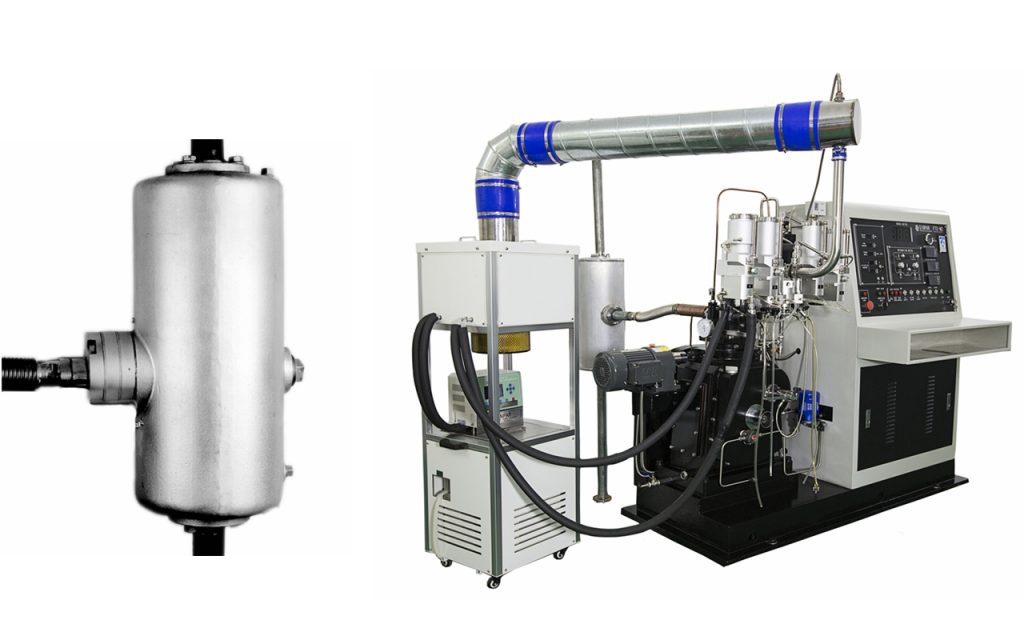During the octane rating, resonance in octane testing equipment can occur, when the configuration creates a critical length/volume relationship between the piping systems and knock of octane testing engine. A resonant condition affects the primary pressure within the system and can affect critical octane rating operating conditions. Resonance pulses and back pressure may affect the stability of knock intensity signal. Eliminating the interference of the variables makes the octane testing result more consistent and accurate.
Exhaust surge tank system as a part of octane testing equipment, includes a flex exhaust manifold, a surge tank and cooling water drainpipe. Those are connected with the octane testing engine. Exhaust surge tank system is a complete system for eliminating resonance pulses and back pressure during the octane rating operation. Meanwhile, the exhaust surge tank system can effectively reduce noise and air pollution.

Exhaust system resonance may be checked by providing either a 3⁄4-in. or larger gate or ball valve at the exhaust surge tank or close to the octane engine exhaust port. Opening the valve should drastically change the exhaust discharge configuration. While the engine is operating at standard conditions if resonance is occurring.
Operate the octane testing engine at standard conditions on a typical sample or reference fuel, and allow sufficient time for the knock-meter reading to stabilize. Observe the knock-meter reading.
Open the valve or affect the change in exhaust piping while the engine continues to operate.
If the knock-meter reading is not affected, resonance does not occur and the piping system is satisfactory. If the knock-meter reading is affected when the valve is opened, resonance may be a factor and typically a change in the length of the exhaust discharge pipe will correct the condition.
Crankcase breather system resonance typically causes the crankcase pressure to be positive. Resonance in the discharge piping is not a problem as long as the operating octane rating engine creates a crankcase vacuum.